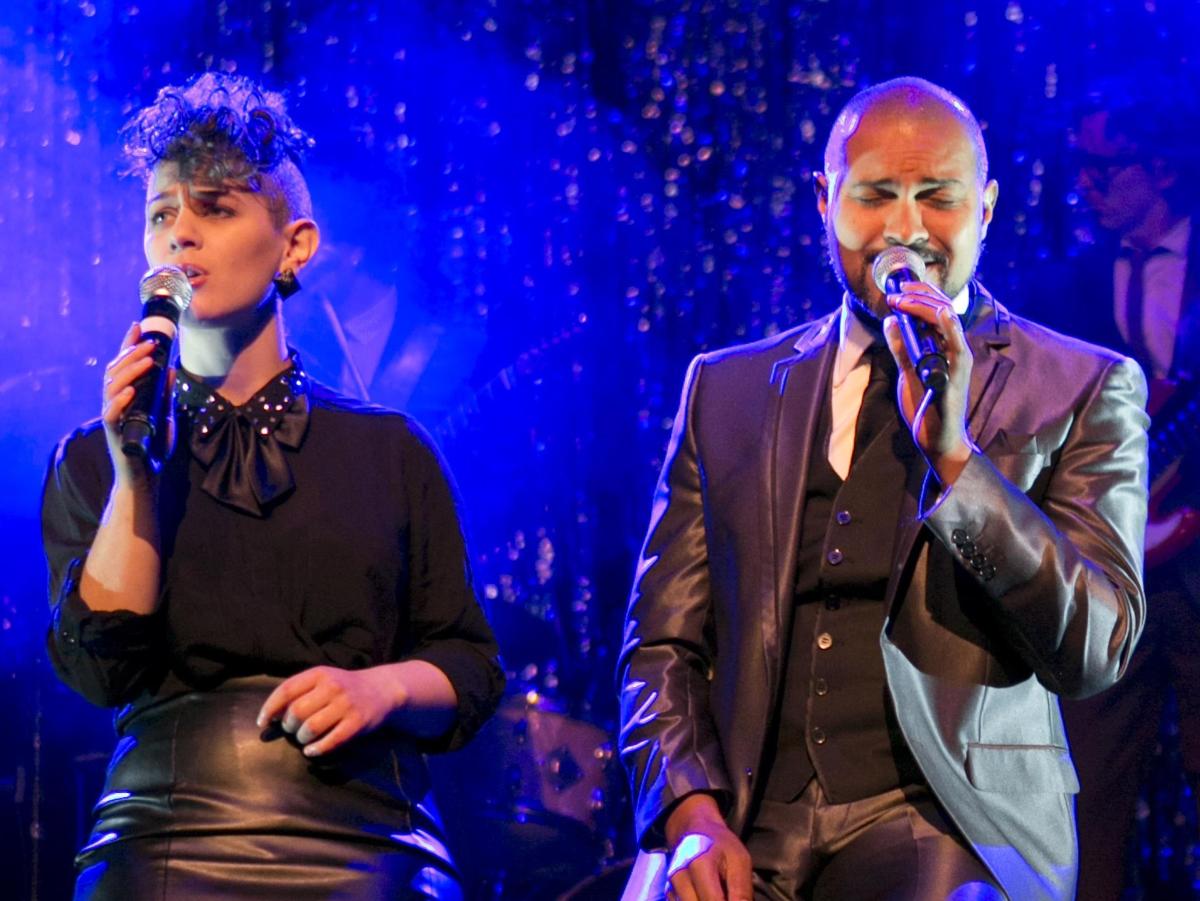Bert La Bonte and Jude Perl. Image supplied by Let’s Get it On.
The end is the beginning as the audience is taken back to November 1983 at the NBL All-Star Game as ‘The Star Spangled Banner’ erupts on the stage ¾ the American flag forming the backdrop, boldly dominating. It’s only months later April 1, 1984 when Marvin Gaye is shot dead by his father, Marvin Gaye Snr — he was to turn 45 the next day.
Starring Helpmann Award winning actor and singer Bert Labonte (Animal Kingdom and the musical version of An Officer and a Gentleman), the Funk City Band, and introducing Jude Perl, Let’s Get It On celebrates the thirtieth anniversary of the death of this legendary soul artist, singer and songwriter — Marvin Gaye.
Act One: Gaye’s unsettling early years of the fifties and sixties narrated by Labonte and Perl, intertwining Gaye’s musical achievements during his short time with The Moonglows and when he first signed with Motown Records — What’s Going On, Can I Get a Witness and his time touring and recording with Tammi Terell performing songs such as It Takes Two.
Although the music takes you back to those fabulous days of Motown and the sixties, Labonte and Perl’s inconsistency in wardrobe choice, and their inability to form a cohesive relationship on stage does little to add integrity to their interpretation of Gaye’s life. Their detached, monotonal story telling disconnects them from each other and the hard, early years of Gaye, while their attempt at ad-libbing and banter are unconvincing. Even the audience does not respond.
The emotion in Labonte and Perl is expressed in Gaye’s music. But it takes half way through the first act for a connection to really take hold.
And then came Act Two and that classic bass riff of I Heard it Through the Grapevine.
Here the pieces start to fall into place — their choice of wardrobe is in harmony with each other as Gaye’s story now enters his turbulent, drug fuelled years of the seventies and early eighties. Labonte is in a white suit and brown shirt, while Perl wears a sequinned gold top and hot pants.
Although their narration of Gaye’s story remains detached and monotonal, their ad-libbing and on-stage banter is easier and more relaxed as the audience starts to respond with laughter and encouragement.
Even the connection between Labonte and Perl musically is more convincing as their vocal performances strengthen. Labonte’s falsetto is phenomenal in Got To Give It Up. His moving rendition of Abraham, Martin and John is possibly the most poignant and moving moment in the show, and Labonte’s sexuality evokes wolf whistles from the audience with Let’s Get It On and Sexual Healing; whereas Perl’s unique and jazzy/blues vocal style shines in Inner City Blues (Make Me Wanna Holler).
Credit needs to be given to the Funk City Band who came together performing each song with emotion and sensation; and also to the lighting and the backdrops in their simplicity adding to the overall mood and drama in paying tribute to Gaye’s life.
The finale finally sees the audience standing up, singing and dancing to Dancing in the Street, an exhilarating ending and joyful ending to a career which spanned less than thirty years. When asked whether he ever loved his son, Marvin Gaye Snr replied: ‘Let’s just say I didn’t dislike him.’
Rating: 3 ½ stars out of 5
Let’s Get it On: The Life and Music of Marvin Gaye
Directed by: Tom Healey
Written by: John H. Livings
Room 8, The Athenaeum, Collins St
www.facebook.com/letsgetitonmarvingaye
13 – 25 May





